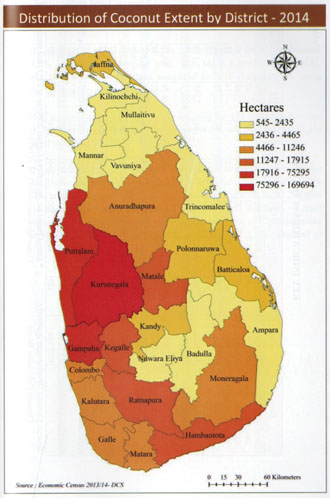Coconut
Coconut Plantations
COCONUT PLANTATIONS
Coconut Cultivation in Ceylon
The Cultivation of coconuts as a plantation crop in Sri Lanka followed the birth of the soap industry in Europe in the middle of the nineteenth century. The soap industry expanded rapidly and then came margarine as a substitute for butter, which further increased the demand for coconut oil.
From 1840 to 1860 was the era of planting by Europeans mainly in the Jaffna and Batticaloa districts; thereafter, the Ceylonese brought many thousands of acres of jungle under coconut cultivation in the Western and North-Western provinces where they established many large estates and small-holdings. Cultivation extended gradually into other parts of the Island and coconuts were successfully grown as a plantation crop even in the hill country far from the sea.
Approximately 82% of Sri Lanka’s coconut cultivation extent came under small holdings of less than 8 ha, according to Ministry of Plantation Industries’ statistics for 2008. It is grown in an extent of about 394,836 hectares, which is equivalent to 20% of the cultivable land in the country and provides livelihood for nearly 0.5 million people.

'Statistical Information on Plantation Crops 2022 – Ministry of Plantation Industries.'
| Highlights A | Total Nut production (Mn) |
Extent under Coconut ('000 Ha) |
Total Export Earnings (Rs. Mn) |
Average Yield |
|---|---|---|---|---|
| 2015 | 3,056 | 455 | 75,259 | 7,765 |
| 2016 | 3,011 | 466 | 84,702 | 7,670 |
| 2017 | 2,450 | 471 | 91,198 | 6,769 |
| 2018 | 2,623 | 449 | 94,723 | 5,914 |
| 2019 | 3,086 | 452 | 108,946 | 7,038 |
| 2020 | 2,818 | 454 | 122,514 | 6,369 |
| 2021 | 3,383 | 456 | 166,034 | 7,034 r |
| 2022 | 3,391 | 480 ** | 262,934 | 7,334 |
** - Estimated
r - Revised

